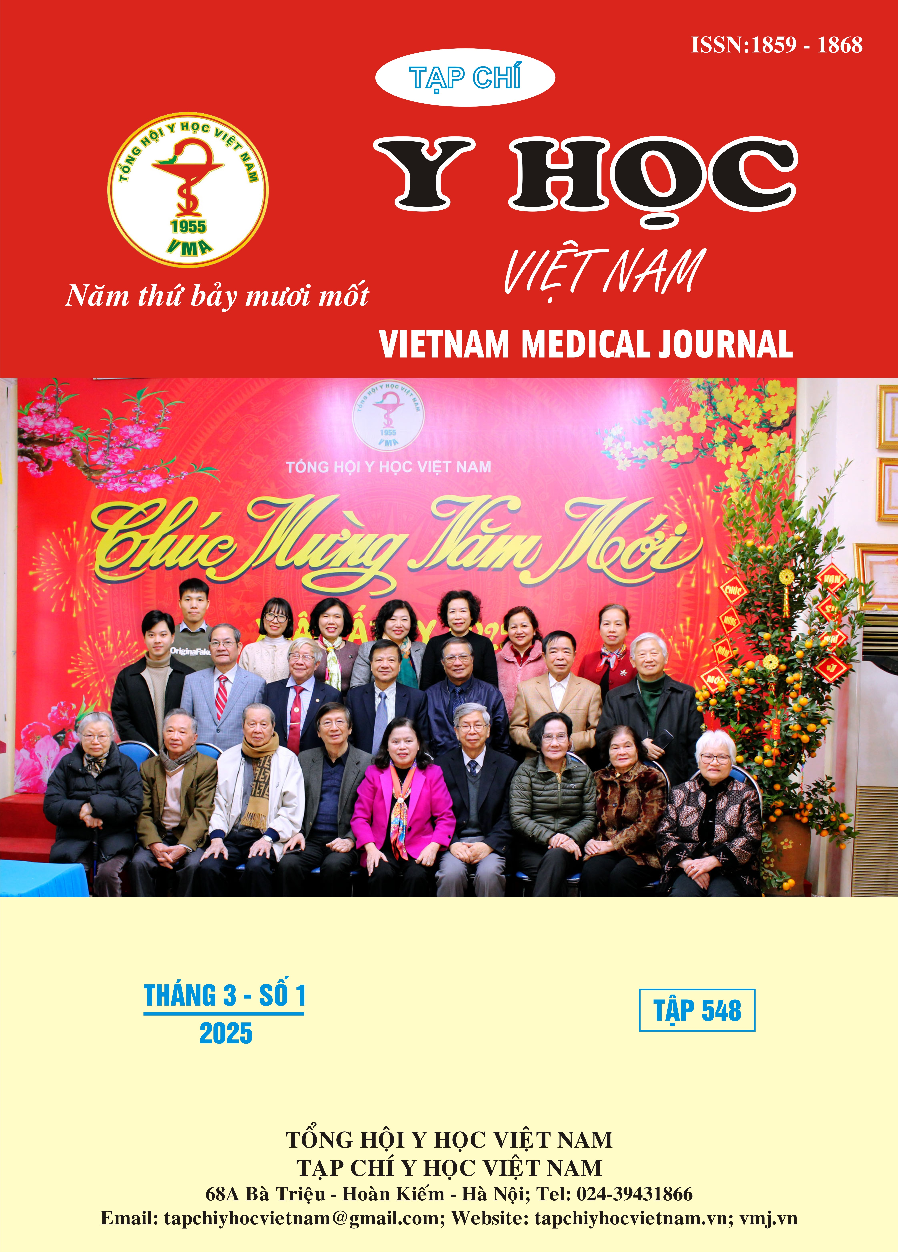SURGICAL TREATMENT OUTCOME OF PEDIATRIC MANDIBULAR FRACTURE AT VIET DUC UNIVERSITY HOSPITAL
Main Article Content
Abstract
Objectives: Mandibular fractures account for up to 48.8% of facial fractures in children; however, there are various treatment methods, and few studies describe the surgical outcomes of this type of injury. This study describes the causes, clinical features, paraclinical characteristics, and treatment outcomes of osteosynthesis in pediatric patients with mandibular fractures. Methodes: This retrospective study was conducted on patients under 16 years old diagnosed with mandibular fractures and treated surgically at the Department of Oral and Maxillofacial Surgery and Aesthetic Plastic Surgery, Viet Duc Friendship Hospital, from 2019 to 2023. The variables studied included epidemiology, causes of injury, clinical characteristics, associated facial fractures, accompanying injuries, and surgical treatment outcomes. Results: A total of 53 patients under 16 years old underwent surgical fixation of mandibular fractures. The average age was 12.8 years; the male-to-female ratio was 3:1, with the primary cause of injury being traffic accidents, predominantly occurring in the age group over 12. Common clinical characteristics included pain, swelling, facial deformity, and malocclusion, with 60.4% of cases presenting with fractures at two or more sites; the most frequently fractured areas were the chin and condyle. The treatment outcomes after surgery were good in 88.7% of cases, fair in 7.5%, average in 3.8%, and there were no poor outcomes. Conclusions: This study shows that surgical fixation of mandibular fractures in children has relatively good outcomes, is safe, and does not damage the dental buds or affect the development of the mandible at any stage of oral development.
Article Details
References
2. Sobrero F., Roccia F., Galetta G. et al. (2023). Pediatric mandibular fractures: Surgical management and outcomes in the deciduous, mixed and permanent dentitions. Dent Traumatol, 39(3), 233–239.
3. Sharma A., Patidar D., Gandhi G. et al. Mandibular Fracture in Children: A New Approach for Management and Review of Literature. Int J Clin Pediatr Den. 2019 Jul-Aug;12(4): 356-359. doi: 10.5005/jp-journals-10005-1643.
4. Kao R., Rabbani C.C., Patel J.M. et al. (2019). Management of Mandible Fracture in 150 Children Across 7 Years in a US Tertiary Care Hospital. JAMA Facial Plast Surg, 21(5), 414–418.
5. Mukhopadhyay S. (2018). A retrospective study of mandibular fractures in children. J Korean Assoc Oral Maxillofac Su¬¬¬¬rg, 44(6), 269–274.
6. Li L., Acharya K., Ghimire B. et al. (2023). Conservative management of mandibular fractures in pediatric patients during the growing phase with splint fiber and ligature arch wire. BMC Oral Health, 23(1), 601.
7. Pontell ME, Niklinska EB, Braun SA, Jaeger N, Kelly KJ, Golinko MS. Resorbable Versus Titanium Rigid Fixation for Pediatric Mandibular Fractures: A Systematic Review, Institutional Experience and Comparative Analysis. Craniomaxillofac Trauma Reconstr. 2022 Sep; 15(3):189-20.
8. Huỳnh Kim Khang. Đánh giá kết quả điều trị gãy xương hàm dưới tại Bệnh viện đa khoa Sài Gòn. Tạp chí y học Việt Nam, số 1 2021, tr5-8.


